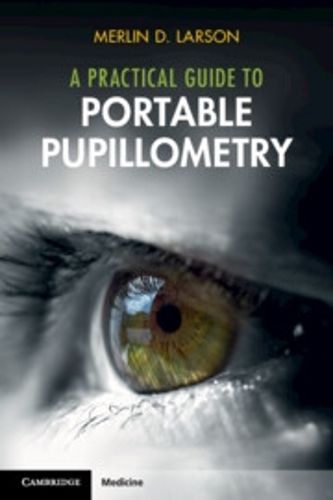Readings Newsletter
Become a Readings Member to make your shopping experience even easier.
Sign in or sign up for free!
You’re not far away from qualifying for FREE standard shipping within Australia
You’ve qualified for FREE standard shipping within Australia
The cart is loading…






The applications and advantages of portable pupillometry for a wide variety of healthcare providers are becoming increasingly evident, with frequent pupil evaluation becoming the protocol throughout critical care and emergency departments. Authored by a world leading expert, this practical, user-friendly book brings together all the research on portable pupillometry and explains the meaning of the various parameters that new portable pupillometers provide. Starting with the anatomy and physiology of the pupil, the book moves on to discuss pharmacological effects, unusual pupillary syndromes, measurement and size of the pupil, pupillary reflex dilation and pupillary unrest. Additional chapters focus on traumatic brain injury, cardiac arrest, intensive care, opioid effect, acute pain and anisocoria and provide valuable clinical examples and case reports. Also featuring an extensive bibliography for further reading, this book is essential reading for all healthcare professionals using the pupil to evaluate drug effects and ischemic/traumatic insults to the brain.
$9.00 standard shipping within Australia
FREE standard shipping within Australia for orders over $100.00
Express & International shipping calculated at checkout
The applications and advantages of portable pupillometry for a wide variety of healthcare providers are becoming increasingly evident, with frequent pupil evaluation becoming the protocol throughout critical care and emergency departments. Authored by a world leading expert, this practical, user-friendly book brings together all the research on portable pupillometry and explains the meaning of the various parameters that new portable pupillometers provide. Starting with the anatomy and physiology of the pupil, the book moves on to discuss pharmacological effects, unusual pupillary syndromes, measurement and size of the pupil, pupillary reflex dilation and pupillary unrest. Additional chapters focus on traumatic brain injury, cardiac arrest, intensive care, opioid effect, acute pain and anisocoria and provide valuable clinical examples and case reports. Also featuring an extensive bibliography for further reading, this book is essential reading for all healthcare professionals using the pupil to evaluate drug effects and ischemic/traumatic insults to the brain.